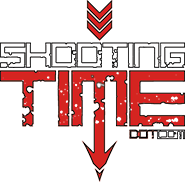Any bowhunter will tell you that hunting elk in the rut is an emotional, mental and physical game like no other. The thought of it drives you to do crazy things, like running up and down mountains in the pouring rain, hiding in your closet to practice bugling after the kids are in bed, and driving all night to get to your favorite spot by first light. We’ve all done it, probably more than once! All for one thing…….elk. One thing is for sure; to become successful at bowhunting elk, you must have one thing, the right elk hunting strategies.
Elk hunting strategies – The buddy system
As a Brother-Sister bowhunting team, we have put countless miles on our boots chasing these majestic and ruthless animals through some of the most rugged country the west has to offer. In our opinion, getting up close and personal by calling elk is the ultimate thrill for any hunter, even when tags go unfilled. For today, we will be focusing on what is referred to as the caller/shooter strategy. We employ this elk hunting strategy the majority of the time we spend in the woods. By alternating who does what job, it gives us both the opportunity to hone our skills as callers, as well as concentrating every ounce of brain and muscle power to get in close and lose an arrow as the shooter. In addition, longtime hunting partners become so in tune with one another, the unspoken language and bond is unmatched and sometimes, unstoppable. So let’s get started!
Elk caller strategies and tactics
As the “caller half” of a mountain-pounding duo, you have a hefty job. Even though you aren’t the one coming to full draw while your heart pounds right out of your chest, here are a few elk hunting and calling strategies to remember.
Elk caller location
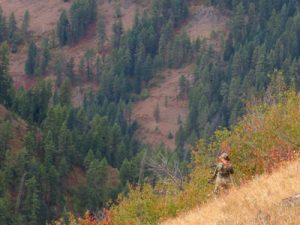 So you’ve gotten a response to a locate bugle or spotted a bull across the canyon and have decided to set up and try to call him in. First, if possible, close the distance. If you are able to get within 150 yards as opposed to 400 yards, you are in the driver’s seat to convince the bull you are a threat as another bull, or a cow that needs a mate, or both. When setting up, determine the most likely path he will take to get to you, and position yourselves accordingly. Depending on vegetation and terrain, the caller needs to be 50-100 yards from the shooter, with the shooter in-between you and the bull. There are several reasons for this. First, a bull has an uncanny ability to pinpoint where a call is coming from. If you are set up right next to the shooter, the bull is going to be looking basically right at you both trying to find the elk that was talking. Secondly, because that bull is going to be desperate to get a visual confirmation of the elk he was hearing before moving closer, he will most likely hold up at 80-100 yards from the caller. So if the caller is already 100 yards away from the shooter and the bull is held up, he’ll probably be within range of the shooter.
So you’ve gotten a response to a locate bugle or spotted a bull across the canyon and have decided to set up and try to call him in. First, if possible, close the distance. If you are able to get within 150 yards as opposed to 400 yards, you are in the driver’s seat to convince the bull you are a threat as another bull, or a cow that needs a mate, or both. When setting up, determine the most likely path he will take to get to you, and position yourselves accordingly. Depending on vegetation and terrain, the caller needs to be 50-100 yards from the shooter, with the shooter in-between you and the bull. There are several reasons for this. First, a bull has an uncanny ability to pinpoint where a call is coming from. If you are set up right next to the shooter, the bull is going to be looking basically right at you both trying to find the elk that was talking. Secondly, because that bull is going to be desperate to get a visual confirmation of the elk he was hearing before moving closer, he will most likely hold up at 80-100 yards from the caller. So if the caller is already 100 yards away from the shooter and the bull is held up, he’ll probably be within range of the shooter.
Wind direction
As in ANY hunting situation, wind direction is key to success. Both the shooter and caller need to set up accordingly, so that the bull will walk upwind of the shooter on his way to find the caller.
Stay Concealed
It is best if you can be out of sight of the shooter. Now this may seem to make elk hunting more difficult and, depending on terrain and vegetation, you may not be able to stay completely out of sight, but if you can see the shooter, then the elk will most likely be able to see you. It’s important that you’re able to move around to call, break branches, rake trees, roll rocks and “be an elk”. If the situation makes it impossible to stay out of sight, use that opportunity to silently communicate with the shooter as needed and consider the use of an elk decoy. When you aren’t free to “be an elk” by making elk sounds, sometimes visual confirmation is exactly what brings a bull elk in within archery range. To be clear, an elk decoy can be used in most all scenarios and may prove especially helpful if the caller is restricted by open terrain. As calling has become a very popular tactic during archery elk season, educated bull elk that have been called in previously will be far more excited with the addition of “eye candy” in the form of an elk decoy.
Become an effective elk caller
If you’ve done your homework and practiced, hopefully you have the basic types of elk calls in your arsenal and can use them comfortably in a hunting situation. Every elk hunter has a different elk call combination, but for us, we prefer to use a mouth reed to do all of our basic cow calling and bugling. We will also use an external reed elk call for cow elk estrus calls. Listening to the different calls on hunting films, a tutorial video, or learning from a seasoned elk caller is a great way to establish elk calling basics. Our new favorite is the i Call Elk app for your phone!
Typically, when we have “hooked” a bull elk and set up on him, the caller will continue to do whatever it was that got the bull interested in the first place. So if we were only cow calling and satellite-bull bugling, that’s generally what the caller will continue to do. But be ready to change your tactic based on what you hear (and sometimes see). The skill to anticipate a bull’s actions is built over time, and only improved by getting out there and logging many hours elk hunting. We still mess up more setups than we get right because you can never predict what that elk will do… But really, isn’t that half the fun?
Put the shooter first
It may be hard to lay your bow down so that you can call elk and break brush for the shooter because there is always the possibility the bull (or another bull) will sneak in on you. So while you want to remain vigilant of what’s happening around you, you need to be 100% unselfish and put all your effort at that moment into getting your partner a shot at an elk. Your job is to convince that bull that you are an elk, and that he should come check you out!
Stick it out
Never leave an elk calling setup too soon. It is easy to get discouraged or bored after 10 minutes of calling with no action. Keep in mind, elk are extremely smart and built to survive. Even during the rut, they will be cautious. It may take them awhile to get to you. Be patient; give the bull time to get to your location. We always let the shooter be the one to end the set-up. If you’re the caller, continue to do your thing until you get the signal that you’re done (we use 3 cow elk mews). However with a little luck, and relentless effort, the end of the hunt won’t require any communication from the shooter except an ear to ear grin, complete with tears and fist pumps.
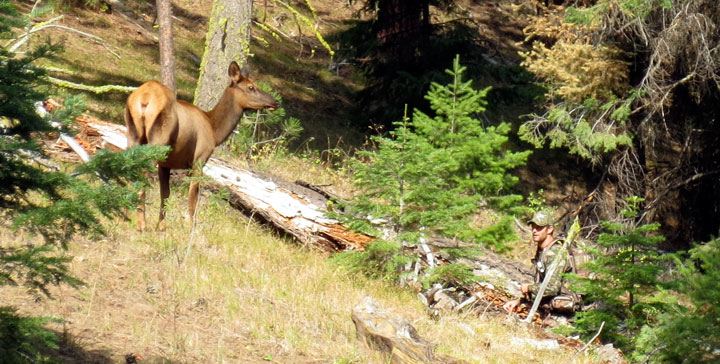
Now it’s time to take a look at the flipside….the shooter. Every elk hunter has been there…you’ve been shooting your bow religiously, working out like crazy, running scenarios through your head, and getting your gear together. And then all of a sudden, you’re in a moment like this…for real. What do you do?
Elk hunting buddy system – Shooter strategies and tactics
This was a scenario from a few years back… We had located a herd, closed the distance, and set up to call…It may look like the shooter is simply sitting and relaxing waiting to draw, but so much more is happening in this elk hunting situation. When you are set up as the shooter, be sure to cover your bases:
Wind direction
This is absolutely #1 AT ALL TIMES while hunting. Position yourself downwind in relation to where you expect the elk to come from. Keep in mind you need to be where you have good shooting lanes if the elk comes in.
Soundproof your shooting hideout
Clear debris from around your feet and body. A pine cone or pile of dry needles will seem harmless until you need to move your boot 2 inches with an elk 20 yards away. Also pay attention to any branches or brush that may get in the way of you drawing your bow.
Blend in with your environment
If possible, set up where you have a “backdrop”. This might be a tree, a bush, or even a sapling. Having this background will hide your human shape and allow you to blend in. On the flip side, DO NOT stand BEHIND a bush or tree that could hinder your shooting lanes or shot opportunities.
Take off your backpack
It may not seem like a big deal, but an elk hunting backpack can make your torso twice as large and twice as visible, especially if you move. Making yourself as small as possible will increase your chances at getting an mature bull elk within range.
Get low
If terrain and vegetation allow, it is a good idea to get down on your knees (for the same reason you remove your pack). But if you plan to do this, be sure to practice shooting in this position. It is definitely more difficult to draw smoothly and maintain good archery form kneeling or sitting.
Have your bow ready
Nock an arrow and have your bow in the VERTICAL POSITION as if ready to draw. If you have it lying flat in your lap, and a bull elk decides to sneak in silently, you are much more likely to be spotted if you have to move your bow into a shooting position. Less movement equals better chances
Range reference points
If you use a rangefinder, now is the best time to range a few reference points, such as a tree, a rock, a log, etc. near the area you expect the elk to appear. This allows you to make a quick estimation of range later on when you might not be able to get away with ranging the actual elk.
Use a mouth reed
One last trick to have in your arsenal….a mouth reed. One sure way to stop a bull in its track is to let out the softest of cow calls. A mouth reed can be used when you’re at full draw ready to let your arrow fly. Again, I suggest you practice this ahead of time so you’ll be ready for your big moment! I should add that a smooth, virtually motionless draw (minus your drawing arm) is crucial in crunch time. Rough, choppy movements will be a red flag to an elk’s keen eyes.
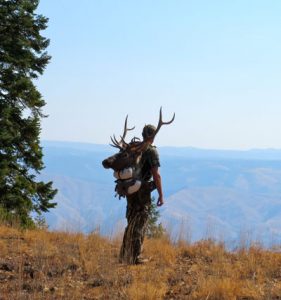 Get aggressive
Get aggressive
When all else fails, and the bull stops responding or won’t come into the elk calls, get more aggressive. If it’s looking like you aren’t going to have a chance and the bull elk is either hanging up or even moving away, move toward him. You have nothing to lose. Sometimes the bull will be 100 yards off raking a tree, paying no attention to anything, trying to intimidate his competition, or there may be enough cover between you and the herd to move in close for an opportunity. Play the wind and creep in silently.
If you get close and still can’t get a shot opportunity, blow a challenge bugle right in the bull’s direction (or even better, if he bugles, you can cut him off with a challenge scream). There is a chance he may head for the hills, but if he has cows to protect, he may run directly toward you to take care of business. At that point, things will happen quickly and he will be right on top of you, so you should be at full draw and ready to stop him with a cow call.
Summary of elk hunting strategies and tactics
We could write volumes on this subject, because there are endless elk hunting strategies and opinions to consider. It isn’t a cut ‘n paste skill to hunt elk, but we hope we have left you with a few elk hunting tips and tactics to try. The Caller/Shooter strategy is only one of many elk hunting strategies that we use. Other elk hunting strategies like hunting from treestands and blinds can also be extremely effective. Spot & stalk elk hunting is also a great tactic when the elk are vocal and the terrain lets you sneak in close.
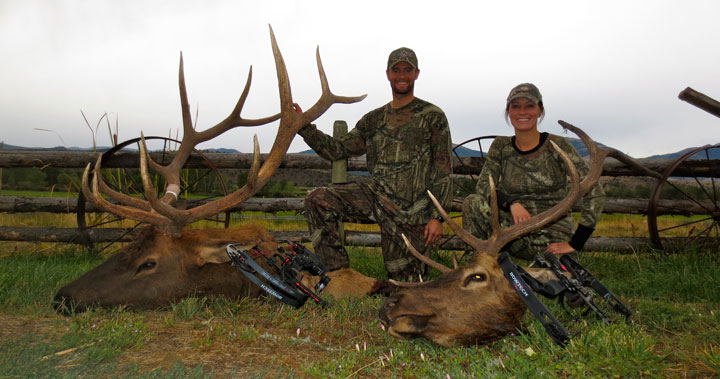
Whatever method you choose, remember this…even if you don’t always bring home a harvest, you most certainly won’t succeed if you don’t get out there and try! Cut yourself some slack when things don’t go perfectly, and just enjoy the hunt. Share your elk hunting experiences with family and friends, enjoy the camaraderie, the laughs, the ups and downs, and every single lesson. No hunt will be the same. And even if you don’t come back with a trophy, you WILL come back with a story. It’s a wonderful gift to be able to hit the mountains each fall, and we will be doing just that until the good Lord tells us we’re done. God Bless & Hunt Happy!!
~ Ryan Hay & Krissy Knox

Krissy Knox & Ryan Hay are a sibling bowhunting team, born and raised in Harrisburg, Oregon, where they both still reside nearby. Growing up in a very close and loving hunting family¸ they have been best friends and hunting partners their entire lives. Krissy is a Research Scientist in the Agriculture Industry, and more importantly, Mommy to a handsome little boy, Jesse. Ryan is a Firefighter-Paramedic for the Eugene Fire Department. He and his wife, Shannon, have two beautiful young boys, Owen and Brayden. All three boys already enjoy the outdoors….hunting, shooting and even calling elk! Krissy and Ryan are so grateful to be involved in the outdoor industry, and hope to always be a friendly, approachable face to encourage and help others wanting to learn and get out there.
